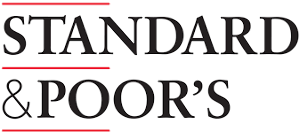
Standard and Poors has just released its latest report into New Zealand’s banking sector and it says the economic risks facing lenders have decreased.
That’s because the growth in average residential property prices across the country has continued to slow over the past two years, after a period of substantial growth in property prices and private debt.
House price inflation has moderated to about 3.0% in the 12 months to June 30, 2019, down from almost 15% in 2016 (and 9.9% a year over 2012-2016), the agency says.
But, in their view, the economic risks going forward are balanced.
“Lower net migration levels, easing business confidence, the foreign buyers' ban, tightened tax measures for property investors, and a potential slowdown in lending under the Reserve Bank's proposed capital requirements will weigh on property prices.”
On the other hand, historically low interest rates, ongoing capacity constraints, the ditching of the capital gains tax proposal, the easing of LVRs, and the ineffectiveness of KiwiBuild have the potential to buoy house prices in the coming year.
Overall, the slower house price growth has moderately reduced the likelihood of a severe house price correction and with it, the potential losses that banks could face in such a scenario, the agency says.
“We assess the economic risk trend for New Zealand, as it affects the banking system, as stable.
“We consider that the process of orderly unwinding of house prices has substantially progressed. We do not expect house price inflation to return to the lofty levels seen in 2015 and 2016.”
However, the agency also says New Zealand's economic imbalances remain somewhat elevated because of persistent current account deficits, high external debt, and an economy that is exposed to fluctuations in commodity prices.
That means that, despite the reduction in risk, the agency has left its ratings of all the country’s banks and non-bank lenders that it rates unchanged.
The rating for the four major New Zealand banks is AA-/A-1+ and its outlook for them is stable, as is the trend for industry risks across the sector.
Standard & Poors also says the profitability of the New Zealand banking system compares favourably against its international peers.
“However, a lower cash rate combined with higher regulatory and compliance costs and the Reserve Bank's substantially higher proposed capital requirements, all pose headwinds for future profitability.
“Nevertheless, higher capital requirements support a stronger banking system overall.”
| « Expect three more OCR cuts – ANZ | Vincent Capital adds a South Island BDM » |
Special Offers
Sign In to add your comment

© Copyright 1997-2025 Tarawera Publishing Ltd. All Rights Reserved
Self regulation within the industry doesn't appear to ne working and any suggestion of government regulation as
proposed by the NZ Reserve Bank is meet with exaggerated claims and untruths of the effects it will have on their customers.
In reality I am of the view them most disadvantaged would be the shareholders as a direct result on the balance sheet.
I do predict that we will see a lot more competition from the non traditional banks as they target particular sectors of our mainstay banks.
Heartland is one that springs to mind with their reverse mortgages.